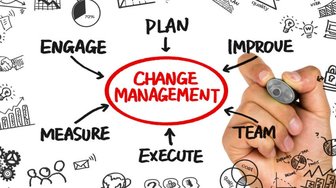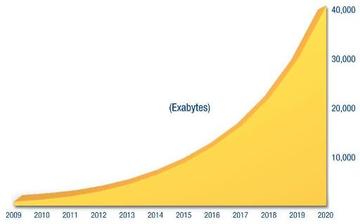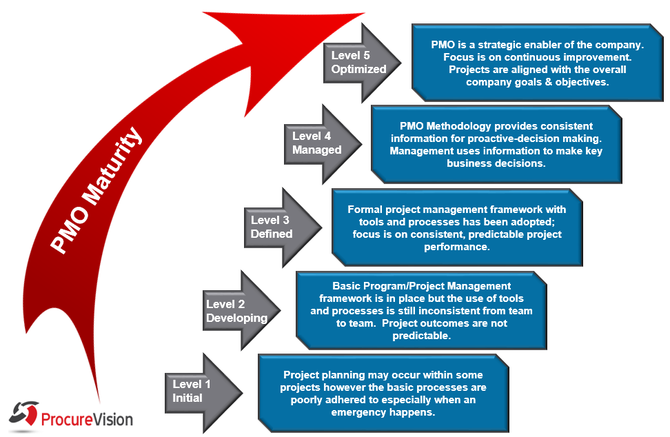 The success of an organization often lies with whether or not you have the right people in the right roles at the right time. According to Harvard Business Review, 88% of organizations with more than 100 employees, rely on assessment tools for external hiring. These assessments can measure competency, work ethic, personality, situational behavior and more recently added - emotional intelligence. But how often is an employee assessed post hire? Ideally, an employee will continue to grow and move within an organization and therefore the attributes that were assessed at hiring, may not be the attributes that are needed most for the current role being performed. In leadership roles, additional areas of measurement can be based on demonstrating leadership qualities, adherence to an organization’s core values, presentation skills, project management and stakeholder management. We break down our employee assessment objectives into four categories and review the performance against them twice a year with each employee.
Each category of objectives has a different weight depending on the role of the employee. For example, a client facing employee has a higher client category weighting in comparison to an internal employee that has a higher internal category weighting. We believe that there is not a one size fits all approach to performance management, which is why we developed a performance assessment structure that is consistent but adjusts to fit the role of the employee, where they are today. Ensuring your employees fully understand and agree with the expectations that you have for them as they grow and move within the organization is vital to enabling the overall organization’s success. With clear objectives, all parts of your organization will be working towards the same goals based on the attributes that matter to your organization and culture. What process does your organization use to assess an individual’s performance?
0 Comments
 A comprehensive PMO Framework is critical to guide a project successfully through its lifecycle, from beginning to end. A PMO Framework we have used with clients has 4 project phases: Concept, Initiation, Delivery and Close. Having a clear project methodology, processes, and tools and templates enable project managers to guide their teams through the project phases. An easy and frequently used PM tool is their Checklist. They can refer to this tool many times during the day to make sure they are doing all the critical work needed during the project phase in which they find themselves. Key project activities during the first phase of a project, Concept Phase, are listed in our Project Management Checklist below. Concept Phase:
Although the Concept Phase involves a lot of work, it is worth spending the time and effort and is critical to setting your project up for success. Are there any other activities you recommend in the first phase of a project?
 Change Management Teams improve the success of projects Change Management Teams improve the success of projects Key IT projects fail more often then they succeed. The top factors of project failure relate to leadership, project vision, organizational communication, distrust of change, and feelings of non-involvement. In short, people issues. Organizational Change Management (OCM) is a critical success factor for large enterprise-wide initiatives. OCM is a framework to manage the effect and perception of changes brought about by the initiative to organizational roles and responsibilities. In other words, OCM address the human side of change. Organizational Change Management has to be managed as effectively as the project itself. We prescribe a dedicated change team for critical projects that have high impact. The change team should ideally include the following roles:
OCM for a project must be fully integrated into the overall project governance so that project managers can take appropriate action regardless of whether issues are related to the deployment of technology or to ensuring employees are aware of and supporting the change effort. A dedicated change team:
How do you perform the functions of OCM in your projects?
There are significant benefits to periodically assessing the maturity of your PMO and no shortage of maturity matrices to compare yourself to. Our PMO Maturity Matrix features five levels: Initial, Developing, Defined, Managed and Optimized. When determining the maturity of a PMO we look specifically at four main areas: Project/Program Governance, People, Processes and Tools.
Once you have determined what level of maturity your PMO is performing at, you may identify areas or aspects that are lagging – for instance you may be collecting standard project data monthly onto a paper template, but would benefit by developing a database to collect project data and metrics so all have access and can compare projects on-line, real-time. Or maybe you identify areas that can mature to the next level, for instance you have an IT PMO but the entire organizations’ projects could benefit from its structure and methodology! Work with your PMO, project governance team and project managers to determine which efforts would benefit your organization the most and prioritize the efforts creating a roadmap for near-term, mid-term and long-term accomplishments. Most organizations never get to the highest level of PMO maturity; the effort and cost to get there outweighs the benefits to some. Either way, a review of your PMO’s maturity will give you insights into what is working well and what could benefit from improvement. A Roadmap can help your organization keep its eye on the ball and reap the rewards of an increasingly mature PMO. Does your organization periodically assess the maturity of your PMO? Do you have a PMO Roadmap for continuous improvement?
 Are you about to undertake a transformation or organizational change effort and are wondering how to manage the change? Here are some simple, yet critical, elements for any effective organizational change management approach, tailored to your organization. The initial phase of our framework is the PLANNING PHASE; it is the first and most important phase of your entire approach.Thorough planning is key to creating an effective change management framework that will work for your change effort. During this phase you will ask yourself: Who will be affected, what will change, and how will they change? WHO: Identify your Stakeholders.
WHAT: Understand what is changing and WHY?
For the “People” component, look at: roles & responsibilities, skill sets, training needs, job category and salary changes. For “Processes”, understand what will change and how – how will the new processes be documented, and how will your stakeholders be trained on the new processes? And, for “Technology” – look at any new or changed technology and understand how it will affect the processes and the people. HOW: How will the change actually be made?
Ideally, the planning phase should occur before the actual change begins. But, if you have already embarked on your change effort, you can still back up and make sure you have adequately covered all of the key elements listed above. How does your organization plan for a change effort? Do you have any additional suggestions?
 Process Improvement Process Improvement As your business evolves and becomes more complex, you will need to change how you work so resources are more efficiently used, automation is applied effectively, and processes are scalable. Follow these key steps and you will make effective improvements to your business processes: Assess the current process
Build the new process
Operate the new process
Making process improvements part of your work cadence will pay dividends in training new employees, communicating with executives and in preparing for future transformations. What other steps have improved your process improvement efforts?
 Data Storage Growth Rate Data Storage Growth Rate According to EMC Storage with research and analysis by the International Data Corporation (IDC), the rate of data growth in the world is 40% a year resulting in a doubling of the total data stored every two years. They estimate that the total volume of data stored will reach 44 Zettabytes by 2020 – that is 44 followed by 21 zeroes. Compare this with 0.8 Zettabytes in 2009. That’s staggering growth! This graph illustrates this visually. Interestingly, the US stores a third of the world’s data according to the global economic news outlet Quartz. You can probably guess the variety of factors contributing to this enormous growth. According to the United Nations, global population growth is about 1% per year. While population growth will contribute some to the growth of data, it is a small factor. In 2010, only 1.7 Billion of the 6.7 Billion humans on this planet used the Internet, roughly a quarter of the population. This is expected to grow to 5 Billion users (roughly two-thirds of the population) by 2020 according to Network World. This penetration of the Internet globally will undoubtedly spur growth in global data. In addition, the number of ways to be “connected” is increasing with the increase in wireless services and the advent of the “internet of things”. Meanwhile what is to be done with all this data? According to Gartner, data growth continues to be IT’s biggest challenge. According to IDC, the amount of data generated outstripped storage for the first time in 2007. This gap has continued to increase. The amount of storage capacity available is increasing roughly linearly while data growth is increasing exponentially. IDC estimates that, at the current rates of growth, there will be a 60% gap between available storage and storage demand. Improvements in storage technology and innovation in storage media has reduced the price of storage exponentially. According to SAS Business Analytics, the price per GB of disc dropped from $17/GB to $0.07/GB in 2012. So is this the answer? Continue to feed the beast, crank up production and meet the exploding demand? Imagine the collateral impacts to data center construction capacity, power and air conditioning needs, etc. While growth of data is a good thing from the perspective of global IT job growth, following the data growth curve blindly is not a good idea. Here’s why. According to IDC, only 22% of the data that is stored was considered “useful”. D.J. Patil, Chief Data Scientist of the White House says, “Data is super messy, and data cleanup will always be literally 80 percent of the work”. Think about the amount of storage that is wasted in storing dead or dormant data that has no business use. Useful data is expected to grow to 37% of stored data by 2020. That’s only a growth of 10% per year as compared with the 40% per year of overall data growth. So maybe we should be finding ways to continuously remove dead data and identify useful data. What do you suggest, so we avoid making our data warehouses into data landfills. The rate of data growth in the world is 40% a year resulting in a doubling of the total data stored every two years. IDC states only 22% of the data is actually useful. Join the discussion on how to prevent data warehouses from becoming data landfills.
 Does your organization have a framework to manage change? Does your organization have a framework to manage change? When embarking on a business or technology transformation your organization will be facing changes, the proactive management of the change significantly adds to your chances of success. Managing change implies understanding the potential impact of a change before it occurs. Managing change is critical to helping all those involved understand and accept the change. Ideally, individuals and the organization work through the change by actively participating in the planning, operation and reinforcement of the change. And, managing change helps ensure smooth and constructive adoption of the change, with as little disruption to the individuals and the organization. So where do you start and how do you do it? Our Organizational Change Management (OCM) Framework operates in three phases: 1. Planning for Change, 2. Making the Change, and, 3. Reinforcing the Change. Our OCM Framework helps you identify and address all necessary success factors and manage them with our simple, customizable tools. At each phase make sure you don’t forget or miss any critical element that could delay or hamper your progress so that you keep ahead of, and on top of, the common pitfalls. Does your company use a change management framework to plan, make and reinforce change?
|
ABOUTProcureVision, LLC is a management consulting company that enables our client's business success through the optimization of their people, process and technology. We provide creative, customized and completely implementable solutions. Archives
April 2018
Categories
All
|











 RSS Feed
RSS Feed